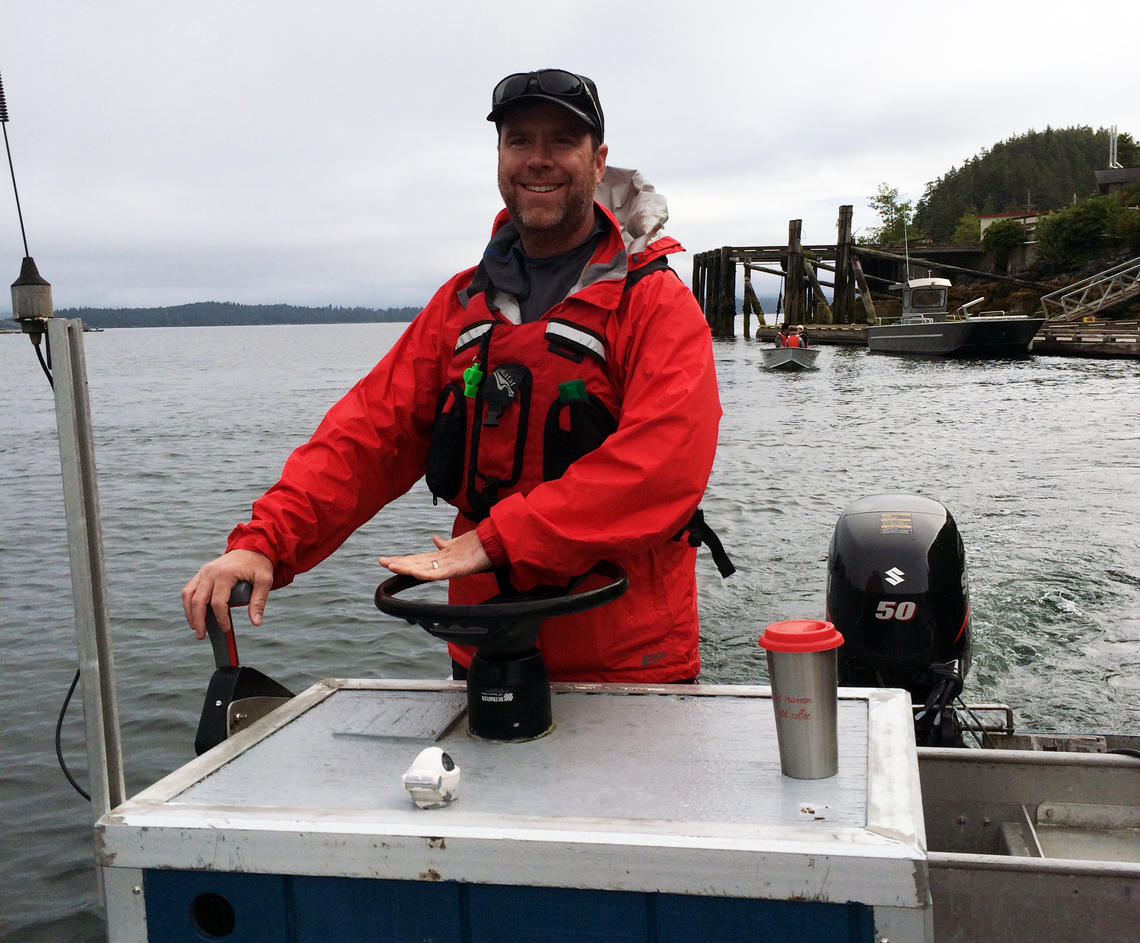
Sean Rogers has been appointed to a five-year term as director at Bamfield Marine Sciences Centre.
Tim Higham
June 19, 2018

Sean Rogers has been appointed to a five-year term as director at Bamfield Marine Sciences Centre.
Tim Higham
For future undergraduate students looking to study marine sciences, universities in coastal cities are the go-to choices. An option that isn’t so obvious? The University of Calgary in landlocked Alberta.
While our geographic locale may not inspire visions of marine havens, UCalgary teamed up with four other western Canadian universities 46 years ago to found the Bamfield Marine Sciences Centre (BMSC), a shared campus for year-round teaching and research, and a field school for coastal-oriented programs on the outer west coast of Vancouver Island. And for the first time, a University of Calgary researcher is at the helm.
Dr. Sean Rogers, PhD, from the Faculty of Science’s Department of Biological Sciences has been appointed to the position of BMSC director for a five-year term, effective July 1, 2018.
“We are thrilled that the success of the BMSC will continue with Sean’s demonstrated leadership skills and passion for the environment,” says Dr. Lesley Rigg, PhD, dean of the Faculty of Science.
Rogers was previously appointed as acting director in 2016. He had previously taught field courses, and conducted his research on threespine stickleback fishes with funding from NSERC.
The associate professor, whose research focuses on ecology and evolutionary biology, plans to increase BMSC’s visibility as one of the best recognized field research and training facilities in the world (even from the Canadian prairies) while prioritizing exploration and discovery that sustains a vibrant coastal ecological community.
“We will achieve this by expanding our support and access to the natural and cultural sites where the major scientific questions and challenges of the 21st century persist,” says Rogers.
The BMSC partner institutions include the University of Calgary, University of Victoria, Simon Fraser University, University of British Columbia, and the University of Alberta.
Unique facility offers enriched learning experiences
Located within the traditional territory of the Huu-ay-aht First Nation in Barkley Sound, and adjacent the Pacific Rim National Park Reserve, BMSC offers unparalleled access to spectacular diversity and cultural heritage in both the marine and rainforest habitats.
“The BMSC offers students authentic hands-on learning experiences in field trips and accredited courses such as field archaeology, limnology, ethnobotany, mycology, place-based learning in Indigenous territories, as well as several courses in the marine and coastal sciences,” Rogers says.
Research opportunities and outcomes at the BMSC support the Faculty of Science’s Grand Challenge, Understanding Earth’s Evolving Systems, which investigates our planet as a system, from its core to the magnetosphere. BMSC programming offers students research experiences in biodiversity and conservation, and the intersection of the natural and built worlds.
“The BMSC has been a paragon for the integration of experiential learning for undergraduates, graduates, and K-12 students. We host up to 4,000 students annually. Half of those students are from Alberta, many of whom have never seen the ocean!” says Rogers.
“I am very proud that the University of Calgary is leading the way with these efforts.”
In pursuing solutions to our research Grand Challenges, the Faculty of Science builds on three platforms. To organize our efforts around our grand challenges, our centres and institutes facilitate concentrations of expertise and crosscutting interactions among disciplines. Our Major Facilities are tangible displays of our evolving vision. They reflect how and where we want to make a difference.